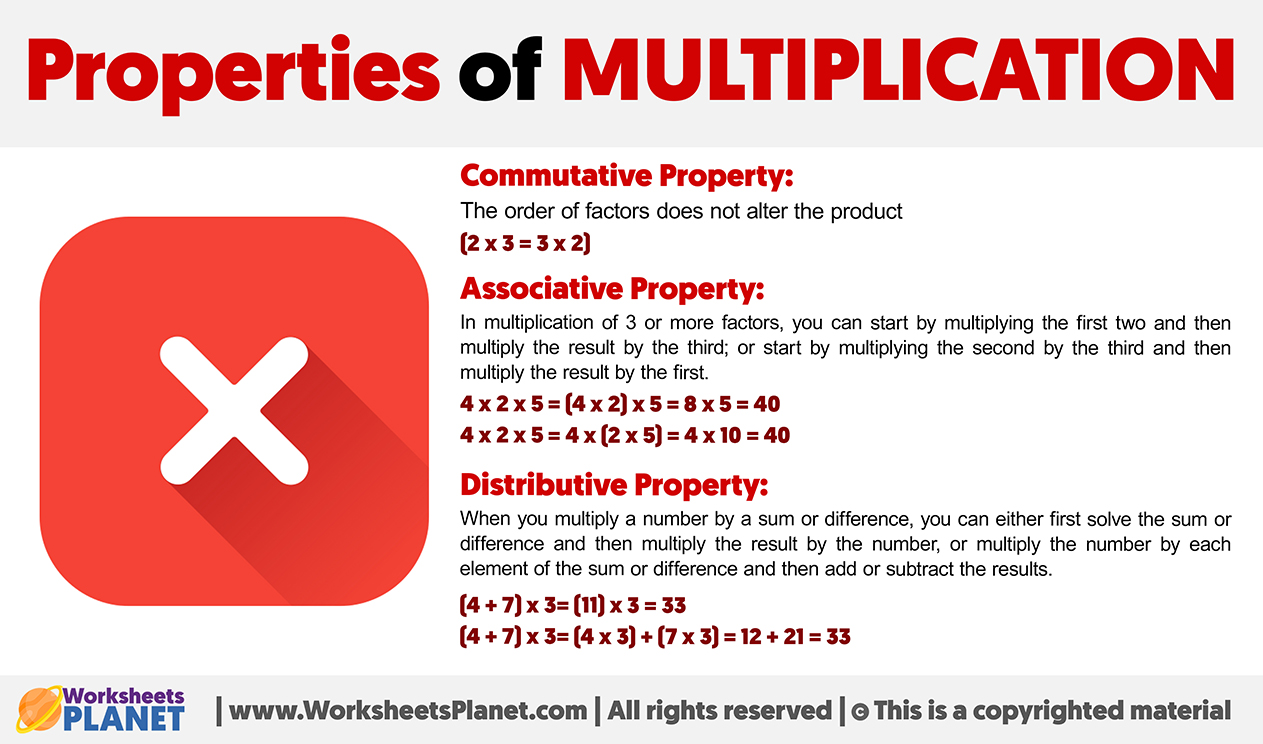Commutative Property:
The order of factors does not alter the product
(2 x 3 = 3 x 2)
Associative Property:
In multiplication of 3 or more factors, you can start by multiplying the first two and then multiply the result by the third; or start by multiplying the second by the third and then multiply the result by the first.
4 x 2 x 5 = (4 x 2) x 5 = 8 x 5 = 40
4 x 2 x 5 = 4 x (2 x 5) = 4 x 10 = 40
Distributive Property:
When you multiply a number by a sum or difference, you can either first solve the sum or difference and then multiply the result by the number, or multiply the number by each element of the sum or difference and then add or subtract the results.
(4 + 7) x 3= (11) x 3 = 33
(4 + 7) x 3= (4 x 3) + (7 x 3) = 12 + 21 = 33


